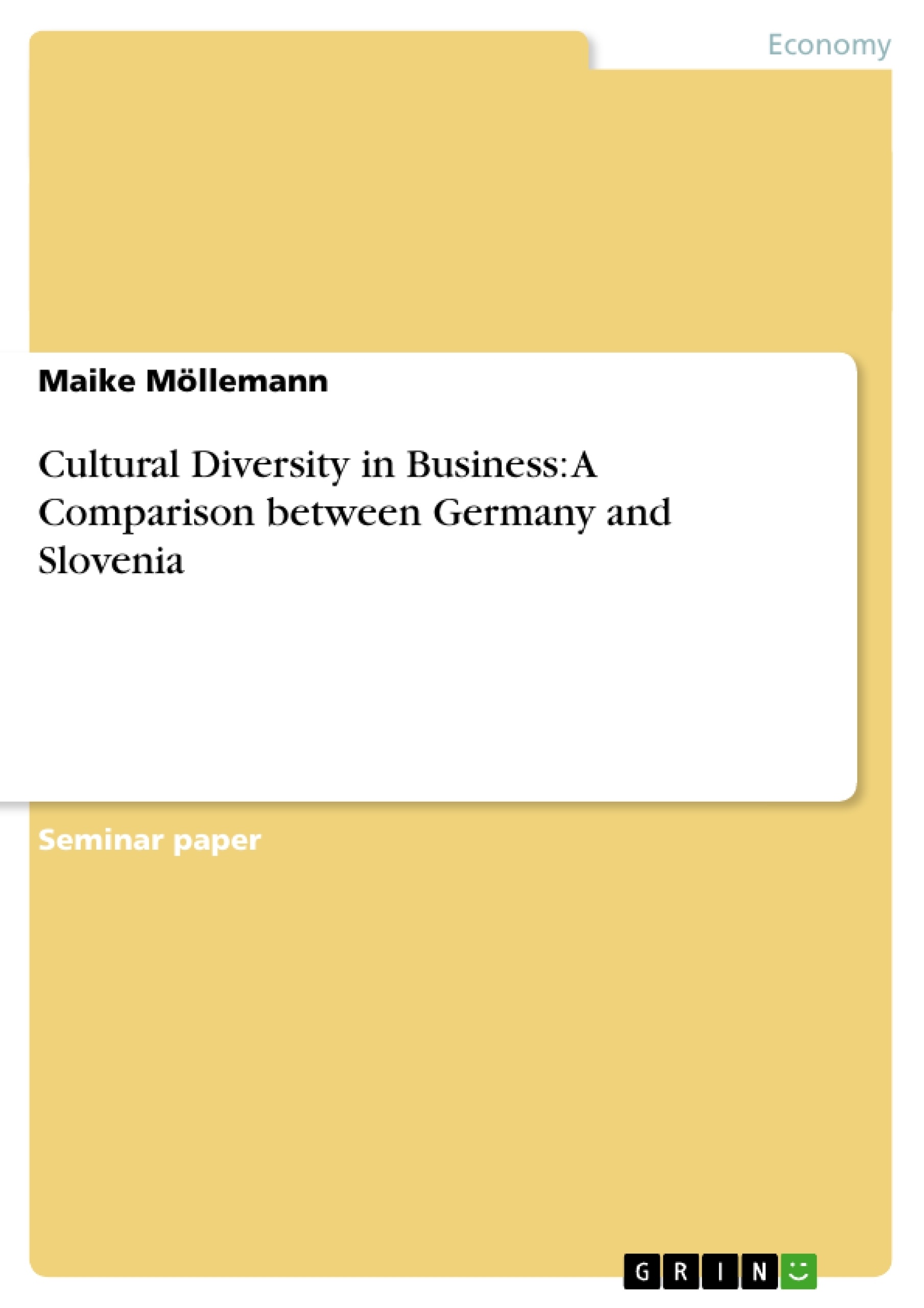In times of globalisation the aspects of cultural diversity and cross cultural communication become more and more important. People have the possibility to travel across continents, meetings are organised all around the world. Therefore the knowledge of at least one foreign language is definitely an essential skill one should have. But nevertheless just translating a word or a sentence from one language into another does not guarantee a successful course of negotiation. According to Mattock (2003) the actual talk is just the tip of the iceberg. Instead the major and thus bottom layer is culture. (Mattock, 2003) Therefore international managers should be aware that transcultural competence can only be achieved by ‘being aware of cultural differences, respecting them and ultimately reconciling them’ (Trompenaars and Hampden-Turner, 1997). The first part of this essay will present general information about Slovenia and Germany. It will then highlight the major characteristics and differences between the business cultures of the two countries concentrating on the dimensions introduced by Trompenaars and Hofstede. (For definitions of culture and the dimensions see Appendix) The conclusion will highlight the major differences between the two business cultures and offer recommendations for German and Slovenian managers doing business with each other.
Inhaltsverzeichnis (Table of Contents)
- Introduction
- Slovenia in general
- Germany in general
- Business Cultures in Germany and Slovenia
- Ethnocentrism versus Polycentrism
- Power Distance
- Uncertainty Avoidance
- Individualism versus Communitarianism
- Low-context versus High-context cultures
- Long-term versus Short-term orientation
- Universalism versus Particularism
- Neutral versus Emotional
- Specific versus Diffuse
- Achieved status versus Ascribed status
- Conclusion
Zielsetzung und Themenschwerpunkte (Objectives and Key Themes)
This essay explores the cultural differences between Germany and Slovenia, focusing on the impact of these differences on business practices. It aims to provide a comprehensive overview of the cultural landscapes of these two nations, highlighting key dimensions of their business cultures. By comparing and contrasting these cultural dimensions, the essay seeks to provide insights into the challenges and opportunities that arise when German and Slovenian businesses interact.
- Cultural Diversity in Business
- Cross-cultural Communication
- Business Culture Dimensions
- Comparing German and Slovenian Business Practices
- Recommendations for Effective Cross-cultural Business Interactions
Zusammenfassung der Kapitel (Chapter Summaries)
- Introduction: This chapter sets the stage for the essay by highlighting the growing importance of cultural diversity and cross-cultural communication in a globalized world. It emphasizes the need for understanding cultural differences in order to achieve successful business interactions.
- Slovenia in general: This chapter provides an overview of Slovenia, its geographical location, demographics, and history. It highlights the country's ethnically homogeneous population and its transition to independence from Yugoslavia.
- Germany in general: This chapter provides a general overview of Germany, covering key aspects such as its economic strength and its historical and cultural background. It sets the stage for the comparison with Slovenia by providing context for the German business culture.
- Business Cultures in Germany and Slovenia: This section dives deeper into the cultural differences between Germany and Slovenia, analyzing specific dimensions of their business cultures as defined by Trompenaars and Hofstede. It explores concepts such as ethnocentrism, power distance, uncertainty avoidance, individualism, and communication styles.
Schlüsselwörter (Keywords)
This essay focuses on the key concepts of cultural diversity, cross-cultural communication, business culture, and the dimensions of national cultures as defined by Trompenaars and Hofstede. It explores the specific cultural characteristics of Germany and Slovenia, highlighting their differences and similarities in business practices. The essay aims to provide insights into effective strategies for navigating cross-cultural business interactions between German and Slovenian companies.
- Citar trabajo
- Maike Möllemann (Autor), 2004, Cultural Diversity in Business: A Comparison between Germany and Slovenia, Múnich, GRIN Verlag, https://www.grin.com/document/33322



